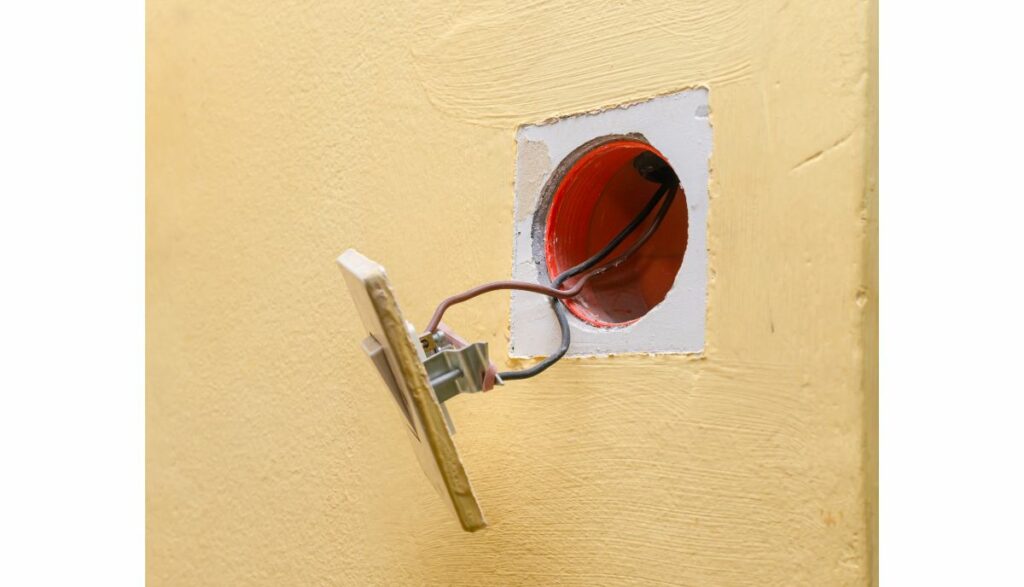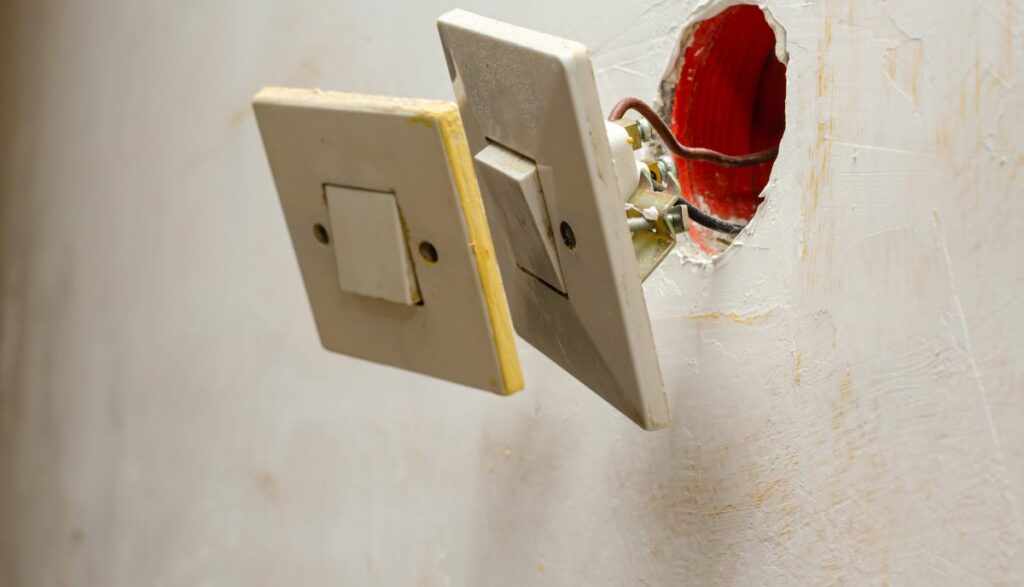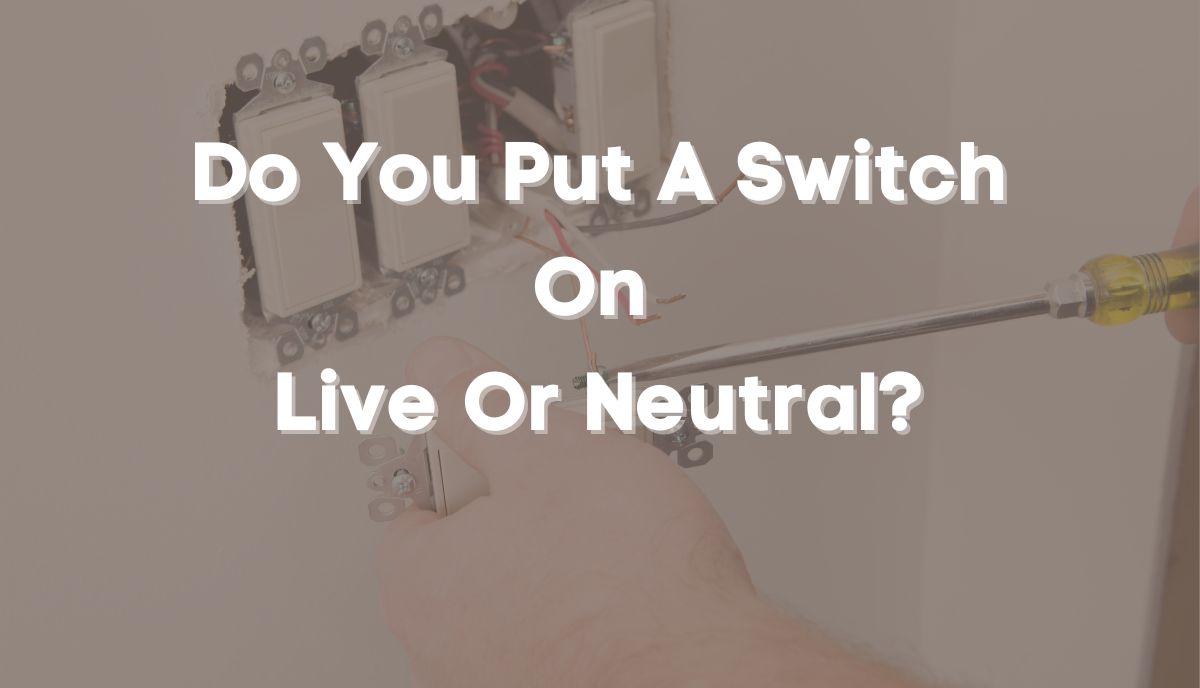You don’t put the switch on the neutral wire. The live wire has a high potential. The neutral and ground wires have zero potential. The difference in electrical potential allows the current to flow from the hot wire to its neutral counterpart.
Technically, the live wire is the most important component because it brings the current from the source. However, you also need the neutral to return that current to the panel. Both lines play a significant function.
However, if you want to break an electrical connection when you turn an appliance off, use the live wire. Switching the live wire prevents the current from flowing through the device. Switching the neutral will do the opposite. It will permit the current to continue flowing.
What Are The Safety Considerations When Deciding To Switch The Live Or Neutral Wire?
Electricians rarely consider the neutral wire in such conversations. The live wire is usually the only rational option because the line brings the current to the appliance.
- Placing the switch on the hot wire allows you to keep the appliance at zero potential when you kill the power (by flipping the switch to the off position). This prevents the current from flowing.
- The appliance is less of an electrocution hazard. Placing the switch on the neutral is dangerous because killing the power (by flipping the switch to the off position) doesn’t change anything.
The appliance is still connected to a high-voltage live wire. The metallic shell of the electronic device can shock you if things go wrong. Switching the live wire is the safest option. The circuit goes dead once you cut the power with the switch. You would be hard-pressed to find an electrical standard that supports the practice of switching neutral wires.
Are There Any Electrical Codes Or Regulations That Dictate Where Switches Should Be Placed In A Circuit?

The National Electrical Code (404.2 (B)) has a section that prohibits contractors from switching grounded conductors. The NEC calls the neutral wire a ‘Grounded Conductor.’ However, you should keep a few things in mind where the NEC is concerned:
- A switch can disconnect the neutral conductor if it also disconnects all circuit conductors at the same time. You can create a configuration that doesn’t allow the ground conductor to disconnect unless all ungrounded conductors have been disconnected.
- The NEC allows contractors to add a pole to disconnect a grounded conductor if it can’t be opened without disconnecting every conductor simultaneously.
- It is worth noting that the NEC targets engineers and electricians because they can understand and interpret the volume’s complicated wording. The NEC has vague clauses and sections that are seemingly open to interpretation. You cannot always take everything the NEC says at face value.
- Additionally, NEC is not a legally enforceable document. Its regulations originate from an international nonprofit organization. They don’t have the authority to create laws.
- That being said, most states adhere to the NEC. However, new editions of the NEC appear every three years. States and counties are usually slow to adopt the NEC’s updates because of all the burdens they impose on contractors.
- In other words, you have two tasks. First, stay abreast of the NEC’s changes. Read the latest editions. Secondly, consult your local authorities. If the latest NEC edition encourages contractors to switch neutrals, don’t assume your state, county, or municipality has adopted that clause. Your local authorities may expect you to switch the neutral even though the NEC says otherwise.
- Ultimately, the local authorities have the final say. Ask them whether you can switch the neutral or not.
How Does Switching The Live Wire Versus The Neutral Wire Affect The Operation Of Electrical Devices?
Switching the live or neutral wire won’t affect the operations of the electrical device. Instead, it determines what happens when you flip the switch to the off position in an effort to kill the power.
Switching the live wire allows you to cut the power. Conversely, switching the neutral maintains the device’s connection to the high-voltage live wire even when you turn the switch off. You risk a potentially fatal shock by touching the appliance in the wrong place.
This is particularly true for a layperson who won’t realize that an appliance is still a shock hazard despite the switch being in the off position.
What Are The Advantages And Disadvantages Of Placing A Switch On The Live Or Neutral Wire?
A switch is designed to turn an appliance on and off. The live wire is the most convenient option to switch because flipping the switch to the ‘On’ position connects the device to the power source. The current will flow, and the appliance will work.
Flipping the switch to ‘Off’ disrupts the current flow and prevents the power from reaching the appliance. You can disassemble the device safely to perform repairs.
Putting the switch on the neutral is disadvantageous. The practice does not offer any benefits. A switch in the ‘Off’ position will maintain the connection between the appliance and the high-voltage live wire. You will suffer a fatal shock if you touch the live wire in the electrical device while performing repairs.
Are There Specific Situations Where It’s Recommended To Use A Switch On The Neutral Wire?
The only significant exception the NEC provides in this area is when the switch disconnecting the grounded conductor simultaneously disconnects all circuit conductors. Otherwise, you may incur penalties by placing the switch on the neutral for purposes you consider beneficial.
Can You Provide Guidance On The Proper Wiring And Installation Of Switches In Different Contexts?

Switches are wide-ranging. While their wiring procedures follow a similar pattern, certain notable differences tend to manifest:
1). One – Way Switch
- Find the two terminals marked ‘COM’ and ‘L1.’
- COM is for the live wire.
- L1 is the output to the fixture.
- If you see an L2 terminal, you can ignore it for one-way switches.
2). Three – Way Switches
- This configuration allows two switches in different locations to manipulate the same light.
- Identify the two traveler wires and the common wire.
- Run the common wire to the COM terminal.
- The other two wires will run to the light-colored traveler terminals.
- Connect the ground wire to the green screw.
3). Two – Way Dimmer Switches
You can’t dim the same light fixture from switches in two locations. You will destabilize the circuit. Instead of using two dimmer switches, contractors prefer to pair a dimmer switch with a regular on/off switch.
4). Double Switch
- You can squeeze two switches in a space that usually tolerates one switch.
- Of the three cables coming to the box, one brings power—the other two run to different fixtures.
- Splice the neutrals
- Connect the grounds.
- The terminal that accommodates the feed wire is on the side with a connecting tab.
- The side without the tab offers terminals that receive the black wires.
5). Wiring A Switched Configuration
- Connect the grounds.
- Connect a white pigtail to the chrome terminal (side with no connecting tab).
- Splice the white wires.
- The black feed wire goes to the brass terminal (not attached to the connecting tab).
- The outgoing black wire connects to a black terminal screw (next to connecting tab).
If you’re new to switches and receptacles, try to keep the following in mind:
- You can find switches in various combinations. That includes light switches in a fan control module and switches combined with GFCIs. Leave the wiring of combinations you don’t understand to an expert.
- You should always connect each wire to the correct terminal: black to bronze, white to silver, and bare to green.
- Read the documentation that came with your appliances. It will explain the color codes. Don’t expect every manufacturer to use the same color codes you know, especially if they originate from a different country.
- Where possible, use the screws instead of stab-in connectors. In fact, avoid devices that only offer stab-in connectors. The connectors are less reliable.
- Cutting the wires too short is bad because you will make weak and unreliable connections.
- If you’re pairing switches and receptacles, make sure a three-slot outlet has a ground.
- You should coil the wires clockwise around the screws. This allows you to close the loop on the wire’s end when you tighten the screw.

